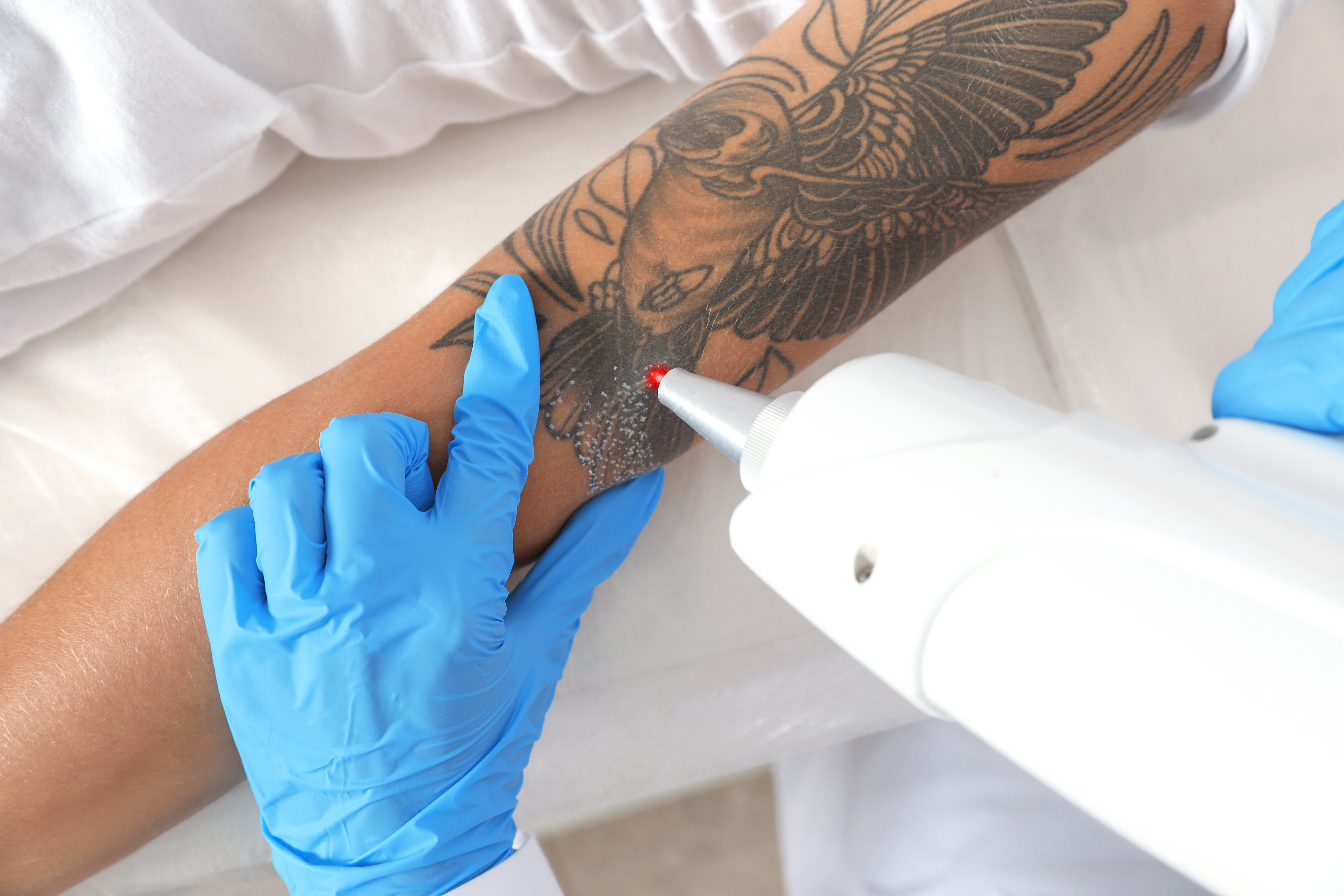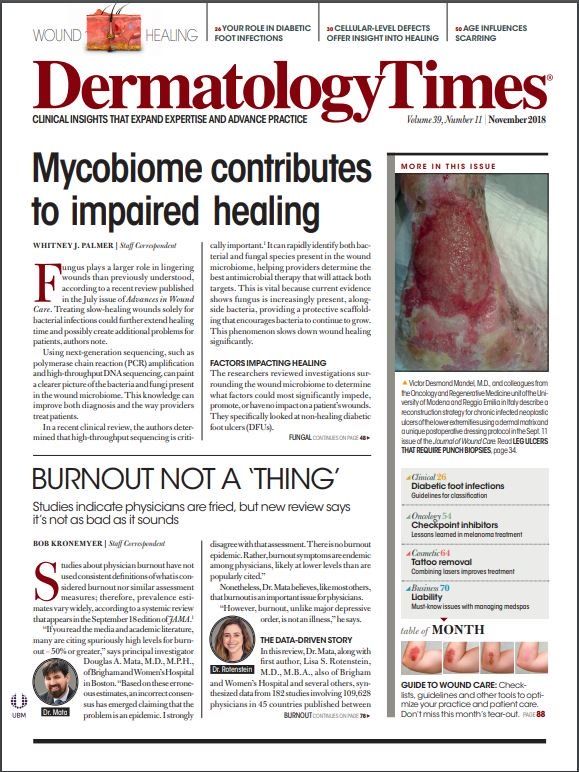- Case-Based Roundtable
- General Dermatology
- Eczema
- Chronic Hand Eczema
- Alopecia
- Aesthetics
- Vitiligo
- COVID-19
- Actinic Keratosis
- Precision Medicine and Biologics
- Rare Disease
- Wound Care
- Rosacea
- Psoriasis
- Psoriatic Arthritis
- Atopic Dermatitis
- Melasma
- NP and PA
- Skin Cancer
- Hidradenitis Suppurativa
- Drug Watch
- Pigmentary Disorders
- Acne
- Pediatric Dermatology
- Practice Management
- Prurigo Nodularis
- Buy-and-Bill
Publication
Article
Dermatology Times
7 Safety recommendations for tattoo removal
Author(s):
Investigators from the Health Hazard Evaluation Program of the Centers for Disease Control and Prevention recently issued these safety recommendations for tattoo removal.
Investigators from the Health Hazard Evaluation Program of the Centers for Disease Control and Prevention recently issued these safety recommendations for tattoo removal. (New Africa - stock.adobe.com)

Investigators from the Health Hazard Evaluation Program of the Centers for Disease Control and Prevention visited a Massachusetts hospital in 2017 to assess healthcare workers exposures to hazardous materials associated with plumes created arising from laser tattoo removal. They assessed exposures to metals, volatile organic compounds (VOCs), particles, bacteria, carbon monoxide, and hydrogen sulfide, plus work practices and airflow patterns. They issued recommendations for improvement that may interest other centers.
RECOMMENDATIONS
ADMINISTRATIVE CONTROLS
- Have laser technology manufacturers provide specific information on: shelf life, storage conditions, and appropriate cleaning methods for laser safety eyewear as described in the American National Standards Institute (ANSI) standard Z136.3 Section 4.6.2.
- Utilize the signs indicating “laser in use” only when lasers are being used.
- Use smoke evacuators to help control nuisance odors. Use the existing smoke evacuators in a manner consistent with how it is used during laser hair removal.
PERSONAL PROTECTIVE EQUIPMENT
- Discontinue use of the laser masks and molded surgical masks for respiratory protection. If employees want to use respirators on a voluntary use basis, use NIOSH approved filtering facepiece respirators (such as an N95).
- Contact local Department of Environmental Health and Safety offices to ensure that your office is in compliance with the voluntary use provisions of the OSHA respiratory protection standard (29 CFR 1910.134) for wearing filtering facepiece respirators during tattoo removal. We found no evidence that respiratory protection should be required.
- Ensure that all LPE is clearly labeled with the optical density and wavelength that the eyewear protects against as described in ANSI standard Z163.3 Section 4.6.2.3. Any eyewear with faded or missing information should be discarded.
- Only purchase and provide respirators certified by NIOSH. The list of NIOSH-approved N95 respirators can be found here: http://bit.ly/NIOSHRepirators. Â
REFERENCES:
Characterizing Exposures During Laser Tattoo Removal in a Hospital Dermatology Center, HHE Report No. 2017-0006-3319, May 2018






